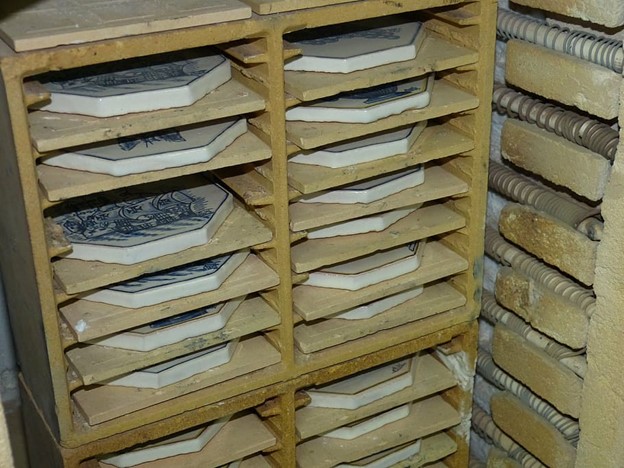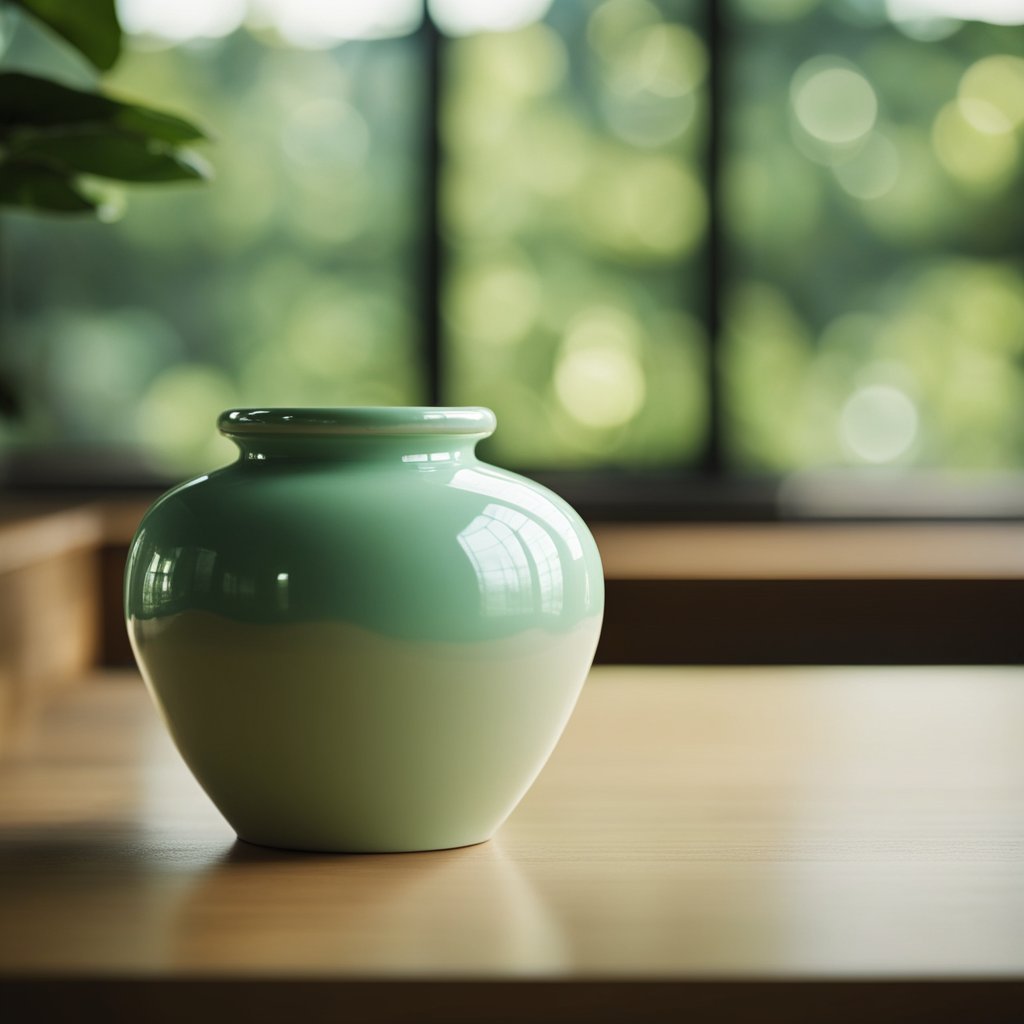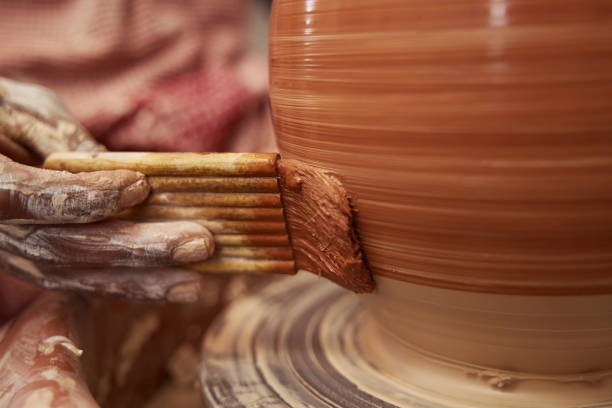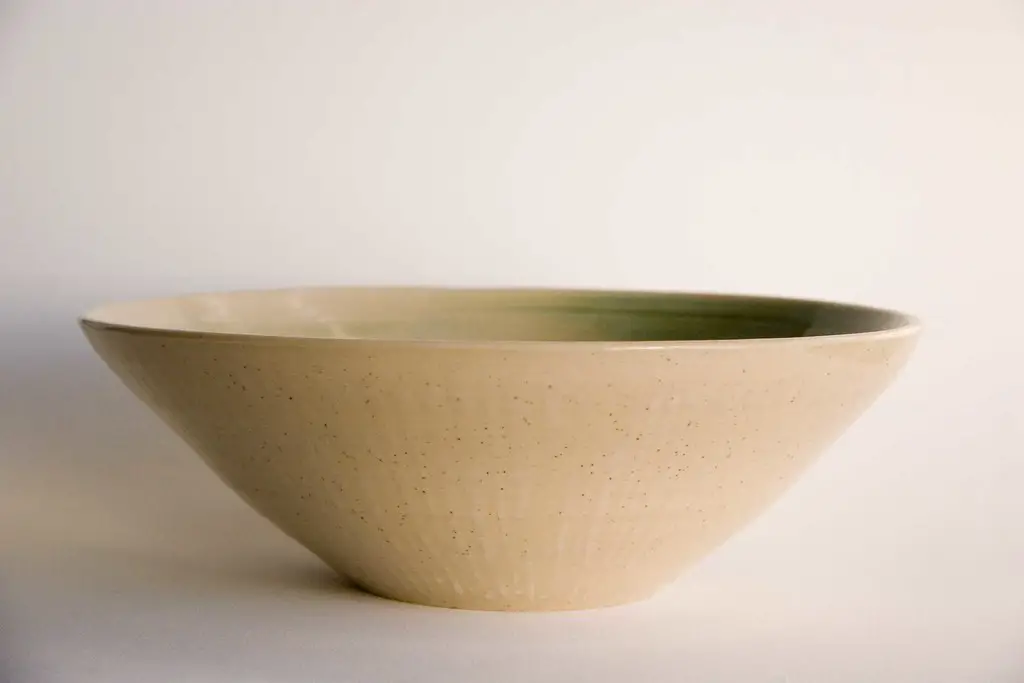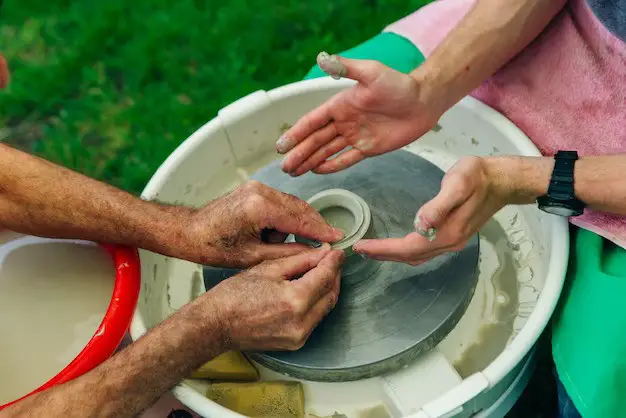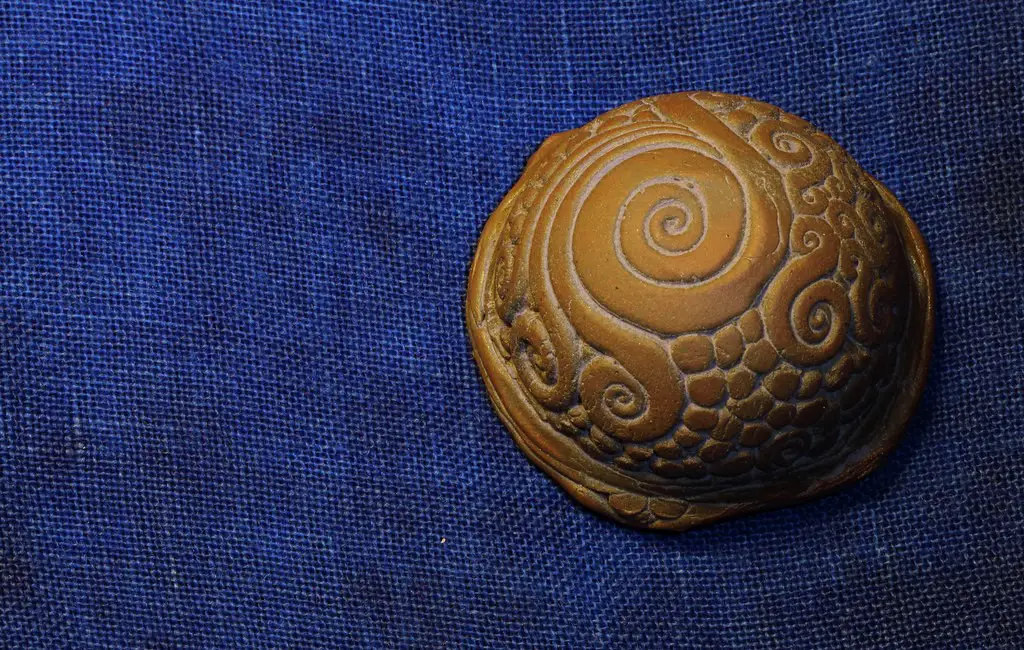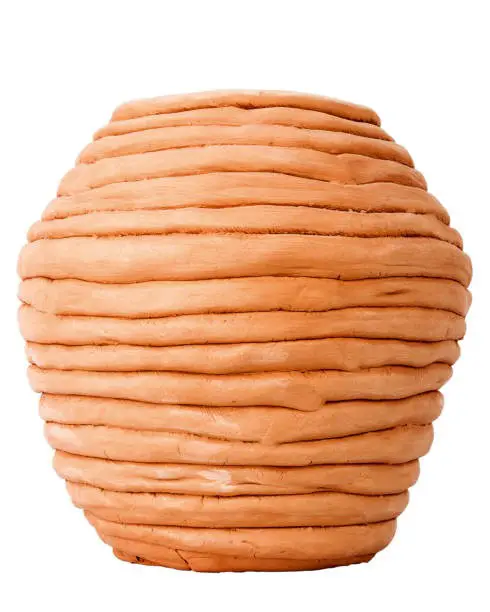Just like any tool or machine, your kiln needs safekeeping as well. When you fire your pottery ware in an electric or brick kiln, the shelves and sides of the kiln wall are exposed to glaze that tends to fuse into the structure after it cools down. So, it is important to protect them and avoid any unwanted damage. Most new pottery artists are often confused between kiln shelf paper & kiln wash. So, which is better between the two? Well, there is no perfect answer to this. Depending on your firing needs and the type of kiln used, the choice can vary. To pick the right one for you, the key is to learn everything there is to know about both kiln shelf papers & kiln wash. So, without further ado, let us learn about these two products for kiln firing!
Kiln Wash: What Is It?
Kiln wash is a chemical mixture that, when applied to your kiln shelves and walls, serves as a barrier between your pottery ware and the kiln itself. It is used to protect the kiln shelves or walls from unexpected glaze drips or runs that can ruin the kiln’s interior. The primary purpose of a kiln wash is to ensure that the glaze doesn’t stick to the shelves.
However, it also prevents any unwanted damage to the kiln that might happen if you try to scrub off the glaze drips after they cool down. Kiln wash can either be bought from the market or made at home with some specific ingredients. For example, regular kiln washes contain a higher amount of alumina that is ideal for normal firing needs. On the other hand, high-fire kiln washes have zirconium which has a melting temperature higher than that of alumina. Although high-temperature formulas are also ideal for low-temperature kiln firing, they tend to be very expensive.
Kiln Shelf Paper: What Is It?
Kiln Shelf Paper serves as a great and convenient alternative to kiln wash. However, the applications are limited as compared to kiln wash. Kiln paper is a heat-resistant and ceramic-saturated lightweight paper that can be fired to 1600 degrees Fahrenheit. Beyond this temperature, it starts to curl up and eventually burn away. So, it is a great option for low-firing temperatures but not ideal for high-firing pottery ware. A great option you can try is the Bullseye Kiln Shelf Paper, which serves as an excellent separator between your potteryware and the kiln shelf.

Kiln Shelf Paper is ideal for:
- Lusters
- Decals
- Slumping
- Enamels
- Decorations
- Glass Fusing
- Overglaze Decorations
- Burnishing
As you can see, kiln shelf paper might not be well-suited for high-firing tasks. Even earthenware that fires at the lowest temperature tends to fire higher than 1600 degrees Fahrenheit.
| Kiln Wash | Kiln Shelf Paper |
| Available In Low-Fire Formulation (Only Useful For Firing Needs Below 1600 Degrees Fahrenheit) | Available On In Low-Fire Formulation (Only Useful For Firing Needs Below 1600 Degrees Fahrenheit) |
| Available In Liquid And Powdered Form | Available Only In Paper Form |
| Can Easily Be Made At Home With The Right Ingredients | Only Available Commercially |
| Ideal For Firing Earthenware, Stoneware, and Porcelain Clay | Not Ideal For Firing Any Clay Type But Only Used For Overglaze Decorations |
Things To Keep In Mind When Using Kiln Wash
Depending on whether you use powdered or liquid kiln wash, the technique can vary. If you are on a budget, it is best to opt for powdered kiln wash as opposed to liquid kiln wash. However, when mixing powdered kiln wash, you must opt for some safety precautions. You must use a respirator or mask while trying to mix the powder as you add water. The powder can enter your nose and eyes, which might cause irritation or allergies. Once the powder has been properly mixed and is now in its liquid form, you can remove the mask.
Here are things to keep in mind when applying kiln wash to your kiln:
- Thorough Application:
Before you apply kiln wash on the kiln, you need to wipe the shelf with the help of a damp cloth. You can also use a sponge to wipe off the dust. Then, you can apply kiln wash either with the help of a sponge, brush or spray gun. Regardless of what you choose, the layer should be thin and evenly distributed. Make sure each layer dries up completely before you apply the next. Make sure the kiln wash isn’t too thin or thick, as it could cause peeling and cracking.
- Check For Flaking:
When you use kiln wash regularly, you have to check for cracks or flaking after each round of kiln firing. If your kiln wash wasn’t mixed right, it could also flake. So, make sure you check the same and throw away the rest if you see flaking. Dried-up kiln wash flakes can fly around inside the kiln and will land on the pottery ware, leaving marks or even damaging the heating elements inside.
- Remove Old Kiln Wash Before Reapplication:
Applying kiln wash layers without removing the old ones can start building up and lead to peeling, flaking, or chipping. So make sure you clean the old layer before you apply the next one.
- Apply Kiln Wash In The Right Places:
Kiln wash is formulated to be applied on the kiln shelves before you place the potteryware on top. When applied on both sides of the shelves, the wash might flack off and leave a residual mark on the potteryware. So, it is important that you only apply the kiln wash on the top side of the shelf. Also, remember that the kiln wash isn’t applied on areas close to the kiln’s heating elements. This is because it can cause the heating elements to fail.
Conclusion
So, when it comes to deciding between kiln shelf paper and kiln wash, the former is always a reliable choice. However, if you plan on firing your pottery ware in lower temperatures, you can surely make do with the help of the paper option.

